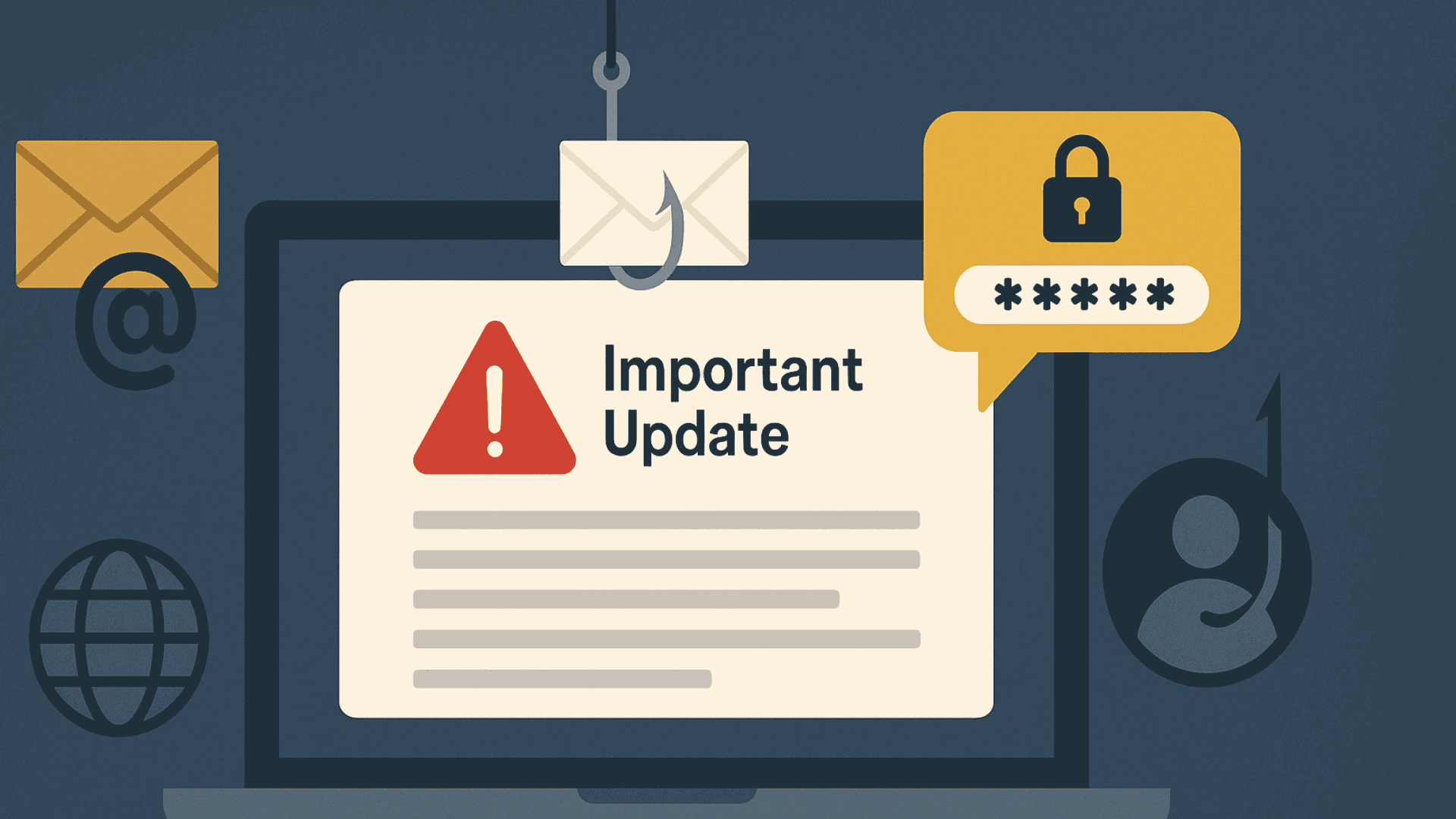The Anatomy of a Modern Phishing Email: What Your Employees Miss Every Day
Understanding the psychological tricks, technical deception, and real-world consequences hidden in everyday inbox threats.

Introduction
It only takes one click.
One employee, one moment of distraction, and one well-crafted phishing email can lead to credential theft, ransomware deployment, or even full-blown data breaches.
In 2025, phishing emails are no longer filled with broken English or Nigerian prince tropes. They’re polished, personalized, and scarily realistic—often generated or enhanced by AI. And they’re getting through.
In this article, we’ll break down the anatomy of a modern phishing email, highlight the tactics used, and explain what your employees are likely to miss. We’ll also offer tips to detect them—and explain why phishing simulations remain the best defense.
Common Types of Phishing Emails
1. Credential Harvesters
These mimic login pages for Microsoft 365, Google Workspace, Dropbox, etc. A fake login page captures the user's email and password.
🧠 Example: “We’ve detected unusual login activity. Please verify your account.”
2. Business Email Compromise (BEC)
An attacker spoofs or compromises a legitimate account and requests invoice payments, sensitive data, or wire transfers.
🧠 Example: “Can you process this urgent payment before 2 PM? I’m traveling.”
3. Malware Delivery
Emails contain malicious attachments (PDF, ZIP, or Excel) that install malware or ransomware when opened.
🧠 Example: “Invoice Q2 - Please see attached.”
4. Fake HR/IT Notices
Mimic internal announcements to prompt password resets or policy reviews.
🧠 Example: “Security policy update - All employees must review by Friday.”
Dissecting the Phishing Email: Key Components
Let’s break down a typical phishing email and the deceptive elements used.
🔍 1. The From Address
- Looks like:
support@m1crosoft.comoralerts@dropbox-files.net - Trick: Domain spoofing or using lookalike characters (e.g., “rn” instead of “m”)
💬 2. The Subject Line
- Designed to trigger urgency or fear:
- “URGENT: Account Suspension Notice”
- “Action Required: Tax Form Submission”
🧠 3. The Body Content
- Uses real company logos and signatures
- May include links to cloned websites
- Often uses common templates (like O365 messages)
🔗 4. The Call to Action (CTA)
- Example CTAs: “Verify Now,” “Reset Password,” “Download File”
- Usually masked behind a hyperlink or button
🧠 5. Psychological Triggers
Phishing relies on cognitive manipulation, such as:
- Urgency: “Act fast or lose access”
- Authority: “Sent from CEO or IT”
- Fear: “Security violation detected”
- Greed: “Bonus payout now available”
Real-World Example: A Closer Look
Subject: Re: Updated Contract – Action Needed
*Hi Max,
Please find attached the final version of the NDA.
Let me know once it’s signed so I can forward it to legal.*
Attachment: NDA_v2.pdf.exe
From: janet@consultant-corp.eu
Analysis:
- Impersonates a known contact
- Includes plausible business language
- The file is actually an executable
If the user downloads and opens it—ransomware installs silently in the background.
What Employees Miss—And Why
Despite annual training, phishing emails still succeed. Here’s why:
- 📬 Inbox fatigue: Dozens of emails per day dull awareness
- 🧠 Cognitive overload: Multitasking lowers scrutiny
- 👤 Trust in appearance: Visual cues like logos are persuasive
- 💼 Social engineering: Exploits role-specific routines (e.g., HR, accounting)
According to Verizon’s 2024 DBIR, 74% of breaches involve the human element.
Red Flags to Train For
- ❌ Unusual sender domain or misspellings
- ❌ Generic greeting: “Dear user” or “Hello customer”
- ❌ Unexpected urgency: “Account locked”
- ❌ Suspicious attachments or shortened URLs
- ❌ Requests for personal info or login re-entry
Encourage employees to follow the S.T.O.P. method:
S: Scrutinize the sender
T: Think before clicking
O: Observe unusual tone or urgency
P: Preview links before clicking
Why Simulations Work Better Than Training Alone
✅ Real-World Practice
Simulations mimic real attacks and test actual behavior, not theoretical knowledge.
📈 Measurable Results
Track who clicks, reports, or fails to notice—and provide targeted coaching.
🔁 Habit Building
Regular testing keeps awareness fresh and reinforces good habits.
How AutoPhish Helps
At AutoPhish, we craft hyper-realistic phishing emails tailored to your business context using AI and real-world templates. Features include:
- 🧠 Personalized email content per industry or role
- 📬 Monthly (or other interval) campaigns with dynamic templates
- 🔍 Click, open, and report tracking
- 📚 Instant learning feedback for employees
Fully GDPR-compliant and hosted in the EU.
Final Thoughts
Modern phishing emails are no longer obvious scams—they are quietly convincing. And when it comes to cybersecurity, your weakest link is still human behavior.
By understanding what makes phishing emails work—and what your employees miss—you can proactively strengthen your defenses.
Train minds, not just checkboxes. Simulate, analyze, repeat.